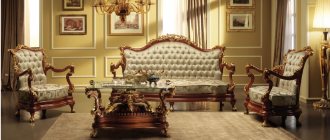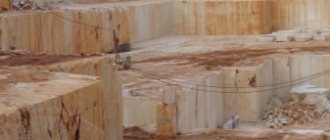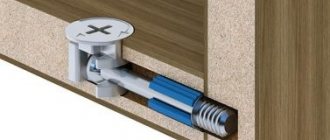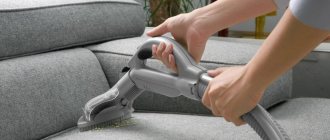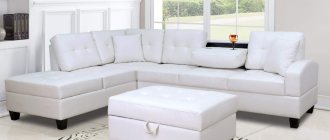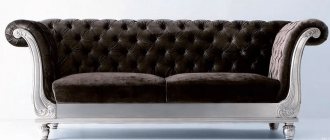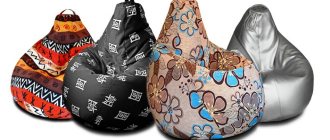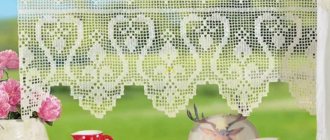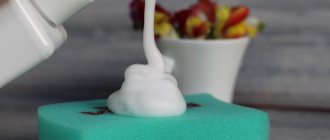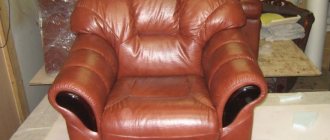Pros and cons of chenille
"Chenille" is translated from French as "caterpillar". Its surface has a pile that resembles the cover of a hairy caterpillar. The composition of the fabric may include synthetic and natural threads (50% each); sometimes there are completely synthetic options. The pile is able to maintain its original appearance for a long time. Some manufacturers guarantee the service life of such fabric for up to half a century .
Advantages of chenille upholstery:
- durable, does not deform, no pellets appear;
- resistant to abrasion and odors, does not wrinkle;
- has hypoallergenic properties;
- elastic, does not fade and does not fade;
- pleasant to the touch, soft, retains heat and gives the furniture a cozy look.
The disadvantages are: high cost of the material, instability to getting wet, streaks appear after drying. Pets can damage it with their claws, creating puffs in the upholstery.
FLOCK FURNITURE. Anti-claw.
FLOK furniture | upholstery fabrics.
Anti claw – ANFORA.
Today, like many centuries ago, the performance characteristics of upholstered furniture, its cost and visual appeal directly depend on the material with which it is upholstered. The furniture manufacturing industry has a wide range of natural and synthetic furniture fabrics that fully comply with the strict modern requirements for quality and safety.
Flock is one of the most common and in demand; its main features will be discussed further.
Profile
The material is a non-woven textile fabric with short soft pile on the front side, due to which flock is often confused with velor. It has outstanding technical characteristics and remarkable aesthetic properties, due to which it is actively used for furniture upholstery, car interior reupholstery, production of children's soft toys, household goods and decorative products.
Flock canvases can differ radically from each other. Their variability is due to the following parameters:
- Base thickness.
- Pile height.
- Spraying frequency (density of fluffy fibers).
- Color palette.
The materials from which flock fibers are made can also vary. The most common are cotton, viscose, polyamide, polyester and aramid flock.
Advantages of flock
The material has a number of features that distinguish it favorably from similar fabrics. Here are the main ones:
- Moisture-proof. Practically does not absorb water.
- High strength. The material is difficult to tear or scratch.
- Wear resistance. Flock upholstery does not deform, does not stretch, does not become covered with pills and does not wear out over time.
- Tactile appeal. This upholstery is very soft, warm and pleasant to the touch.
- Easy to use. Easy to clean and does not require special care.
- Attractive appearance. It looks very expensive and respectable.
- The cost of the material is significantly lower than that of most analogues.
IMPORTANT!
All flock fabrics are made by gluing electrified pile to the base, so cleaning them with solvents, alcohol and benzine-containing products is strictly prohibited.
It is recommended to carry out dry cleaning using a vacuum cleaner, and it is advisable to get rid of stubborn dirt using a regular soap solution or specialized cleaning products .
Advantages and disadvantages of flock
Flock is similar to velvet, has a short and soft pile. It is obtained by gluing nylon pile fibers onto a cotton (or polyester) base under an electrostatic field. This process is called flocking.
The advantages of flock can be considered:
- strength and tear resistance;
- hair and fur do not stick, and do not deteriorate under the influence of animal claws;
- moisture-resistant and easy to care for – easy to clean, treated with impregnations;
- does not fade or pill;
- pleasant to the touch and insensitive to temperature changes.
The negative aspects of flock can be considered: it wears out during use, absorbs odors. Alcohol and other solvents can cause bald patches to appear on the surface of the fabric. If furniture is transformed during use, the pile may wear out at the joints.
Production
Modern flock production is strikingly different from old technologies; now fibers are applied to glue using an electrostatic field. The technology is simple in principle. The woven base moves along the machine while an adhesive substance is simultaneously sprayed onto it. The flock comes evenly from the hopper, which is located above the base. The electrostatic field is positioned so that it is above the base. Under the influence of this field, the electrified villi take a vertical position and are tightly connected to each other. This creates a perfectly smooth surface that is soft and velvety to the touch. Using dry or wet printing, a pattern of any configuration can be applied to the flock.
Wet printing on flock is carried out directly during the production of the material. Hot fabric is the main condition for wet printing. This printing method produces a soft fabric, unlike dry-printed fabric. Dry flock printing is carried out on fabric that has already cooled.
Quality indicators of a nonwoven material include the strength of the connection between the base and the fibers. It is this strength that guarantees that the fabric will not fray, the flock will not crumble or pluck. Also important quality factors include the number of fibers per measurement area (measured as 1 cm2) and the quality of the fibers.
The fibers in modern flock are made of synthetic material - nylon, the base consists of a mixture of cotton and polyester in a ratio of 1 to 2.
A pattern can be applied to fabric not only using paint, but also by applying a second layer of flock to flock. The top layer of fibers of any color is not located evenly, but in the form of a pattern. If the top layer is the same color as the base, then a relief pattern is made. Flock can be applied to any fabric in fragments in the most unique combinations. In addition, there are flocks with embossing, on which the design is created using a roller with a relief image.
Microvelor is a type of flock. A large number of fabric varieties fall under this definition. Fabrics are made using special embossing and dyeing technology. The technology is based on glue, which, when dried, remains elastic and gives the fabric the ability to pass air. The fibers are attached with this glue so firmly that microsuede can be washed.
What is preferable for upholstering a sofa?
- It is recommended to choose chenille for the sofa in the living room. It gives a presentable appearance and sufficient durability to furniture for people with a quiet lifestyle.
- A more stain-resistant flock would be better suited for a children's sofa. If necessary, it can be easily cleaned with detergents, which is important for any children's things.
- If there are animals in the house, then the flock sofa will withstand the marks from their claws.
- If there is smoking in the room, then chenille will not absorb odors, and the only alternative to it can be leather, which makes the furniture expensive.
Flock production
Today, the finest fibers are applied to a base coated with an adhesive composition (adhesive) and are securely attached to it. Flocking - the application of flock (lint) - can be applied to any surface. One of the areas of application of flocking is the production of fabrics for upholstered furniture.
The properties of flock depend on what material was taken for the base, what material was used to produce the fibers, what their length is, whether they are uniform or not, and what adhesive was used.
Today, flock is produced with the application of uncalibrated, that is, small, fibers - this is how we get “suede” or “felt” flock. The second method is to apply calibrated fibers of equal length - this is a “velvet” flock. Not the entire fabric can be flocked, but only part of it - this way you get truly unique fabrics for upholstery and upholstery of sofas and armchairs, with a voluminous texture.
Nylon, also known as polyamide, is most often used as a raw material for the production of flock, that is, the fibers themselves. This material is very resistant to abrasion, perfectly “takes” and retains color, can be dry cleaned, and is not susceptible to moisture or temperature changes. If the villi have the correct length - no more than 1 millimeter - then they do not break and easily restore their original shape, straightening out after someone has sat on the sofa. If you upholster interior items with such fabric, you will not soon need to repair upholstered furniture - this is a truly durable material that cannot be demolished.
There is also flock made of viscose fibers. This is a natural fiber obtained from cellulose, which also has good abrasion resistance and a rich color palette. Viscose flock is much softer to the touch and silkier, but crushed fibers do not restore their shape, so it is better to choose viscose flock for upholstered furniture with short pile.
Relatively recently, flock with a special Teflon coating appeared on the market. This type of flock is especially good because it does not require special care and can be used for upholstery of upholstered furniture that is actively used. Teflon-coated flock does not wear out and any dirt can be easily removed from it.
Natural fabric is most often used as the basis for applying flocked fibers, which ensures good ventilation of the “filling” of the sofa or chair. In addition, natural fabrics partially remove static electricity, which synthetic flock fibers easily accumulate.
When is flock better, and when is chenille?
Before choosing suitable upholstery for future furniture, you need to assess how intensively it will be used and for what purposes it will serve.
Important! It should be remembered that the sofa should be in harmony with other interior items and at the same time be the central item in the room. It is to match its color that curtains are chosen, walls and floors are finished.
Flock and chenille are excellent upholstery options, but their features must be taken into account when choosing upholstered furniture.
Why is flock material so good?
- Flock fabric is one of the most practical and wear-resistant. It is resistant to ultraviolet radiation and is not afraid of temperature changes. The material does not wear out over time and is not deformable. Some collections of flock fabrics are so durable that they are as durable as natural leather, and sometimes even surpass it.
- It has unique anti-vandal properties, thanks to which upholstered furniture will be reliably protected from the claws of pets.
- Not afraid of moisture. Drops of water that fall on flock fabric will remain on the surface and will not be absorbed. This feature is valuable not only for upholstered furniture, but also for the car interior, because such things are difficult to dry.
- Cleans well. Any stains that do not leave a trace can be removed with detergent. Therefore, flock, a material for a sofa, will be an excellent solution if children live in the house.
- Lets air through.
- Pleasant to the touch. The material has a soft texture and remains warm at any room temperature.
- Easy to care for. Caring for flock furniture is no more difficult than caring for furniture made from genuine leather.
- Convenient to work with when upholstering. Due to the fact that flock upholstery material fits well on furniture, it is to the liking of many craftsmen.
- Affordable price. With such significant advantages, flock remains at an average price level among other upholstery materials.
